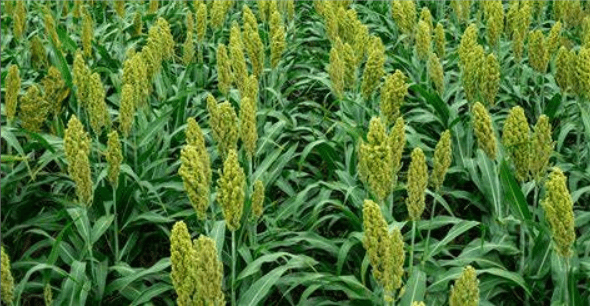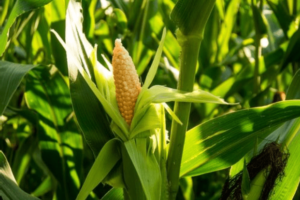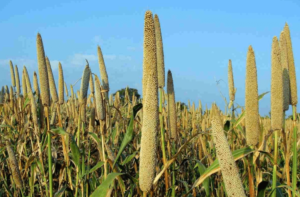SORGHUM CROP (Jowar)

Scientific name= Sorghum bicolor
Origin= India and Africa
v Area Distribution=
· In all over world:
North America, Sub- Saharan Africa, Northeastern China, Deccan Plateau of India, Argentina, Nigeria, Egypt, Mexico, France, USSR, Spain etc.
· In India:
Maharashtra, Andhra Pradesh, Karnataka, Madhya Pradesh, Gujarat, Tamil Nadu, Rajasthan, Uttar Pradesh etc.
v Classification:
Sorghum crops can be classified into two types they are following:
1. Basic Races
2. Hybrid Races
Sr.No. | Basic Races | Hybrid Races |
1. | Bicolor | Guinea-bicolor |
2. | Guinea | Caudatum-bicolor |
3. | Caudatum | Kafri-bicolor |
4. | Kafri | Durra-bicolor |
5. | Durra | Guinea-caudatum |
6. |
| Guinea-kafri |
7. |
| Guinea-durra |
8. |
| Kafri-caudatum etc. |
v Varieties:
· Dashi varieties:
Varsha, T22, Mau T1, Mau T2 etc.
· Hybrids varieties:
CSH5, CSH6, CSH9, CSH10, CSH11, CSH13, CSH14, CSH16, CSH18, CSH23, SPH504 etc.
· Composites varieties:
CSV10, CSV11, CSV13, CSV15, CSV17, CSV20, SPV462, CSV24SS, SPV462, GJ39, GJ38, GJ41, Pratap Jowar 1430, PVK 801, M35-1, Phule Amruta, Phule Panchami etc.
v Importance=
· Sorghum ranks third in the major foodgrain crops in India, whereas it is the fourth foodgrains of the world.
· Millions of people in Africa and Aisa depend on sorghum as the staple food.
· It is also used as industrial raw material in various industries in the USA and other developed countries.
· It makes comparatively quick growth and gives not good yields of grains but also very quantities of fodder.
· The grain is also fed to cattle, poultry and pigs.
· Sorghum can satisfactorily replace other grains in feeding programme for diary cattle, poultry and pigs.
v Nutritional value:
· Sorghum grain contains about 10-12% protein, 3% fat and 70% carbohydrates
v Cultivation Practices:
A. Soil Requirement:
· The most ideal soil for growing sorghum crops is well-drained clay loam soil.
· Sorghum can also be grown on heavy loam, light loam, alluvial and black cotton soils.
· Alfisols(red) and Vertisols (Black) soils are also suitable for sorghum crop germination.
· P.H.= 6.5-7.5
B. Climatic requirement:
· Temperature: 20-30 degree.
· Rain fall: 300-400mm
· Relative humidity: 70% above.
C. Sowing time:
D. Spacing:
· Row to row: 40-45 cm
· Plant to plant: 15-20 cm
· Seed should be sown at depth of 3-4cm.
E. Seed rate: 10-12 kg. /Ha.
F. Field Preparation:
· Give four to five ploughing and planking to make the seed-bed free from clods and weeds.
· Use mould board plough, disc harrow or cultivator for the 1st cultivation.
A. Irrigation practices:
· Irrigation immediately after cutting the main crop.
· Irrigation should not be delayed for more than 24 hours after cutting.
· Irrigation applied on 3rd-4th day after cutting.
· Subsequently irrigate once in 7-10 days.
· Stop irrigation on 70-80 days after ratooning.
Source of content: Irrigation Management :: Sorghum (tnau.ac.in)
B. Nutrient and fertilizer management:
FYM: 10-15 tons/ha
N:P: K =
Nutrient Quantity (kg/ha) | |||
Variety | N | P | K |
Deshi varieties irrigated | 50 | 30 | 25 |
Hybrid varieties irrigated | 100-120 | 50-60 | 40-50 |
Unirrigated | 60 | 40 | 30 |
A. Weed Control methods
Mechanical methods:
They are many mechanical methods are used for controlling weed management. They are following:
a. Hand pulling
b. Hand weeding
c. Burning
d. Flooding
e. Hoeing
f. Tillage
g. Smothering with non-living material(mulching).
h. Earthing up
Chemical method:
· Spray atrazine 0.25 kg/ha as pre-emergence application and
· Sorghum based intercropping system with pulses, use Pendimethalin at 0.75 kg/ha.
B. Harvesting:
· Most of the high-yielding sorghum hybrids and vanities take 100-120 days to mature.
· The crop should be harvested immediately after maturity.
· The right stage for harvest is when grains are hard and contain less than 25% moisture.
· Generally, 2 methods of harvesting i.e., either stalk cut or cutting of ear heads by sickles are employed.
Yield: 25-35 q/ha
Other agronomy crops links:
Wheat
crop:
WHEAT CROP | agriculturestudymaterial
Rice
crop: RICE CROP | agriculturestudymaterial



